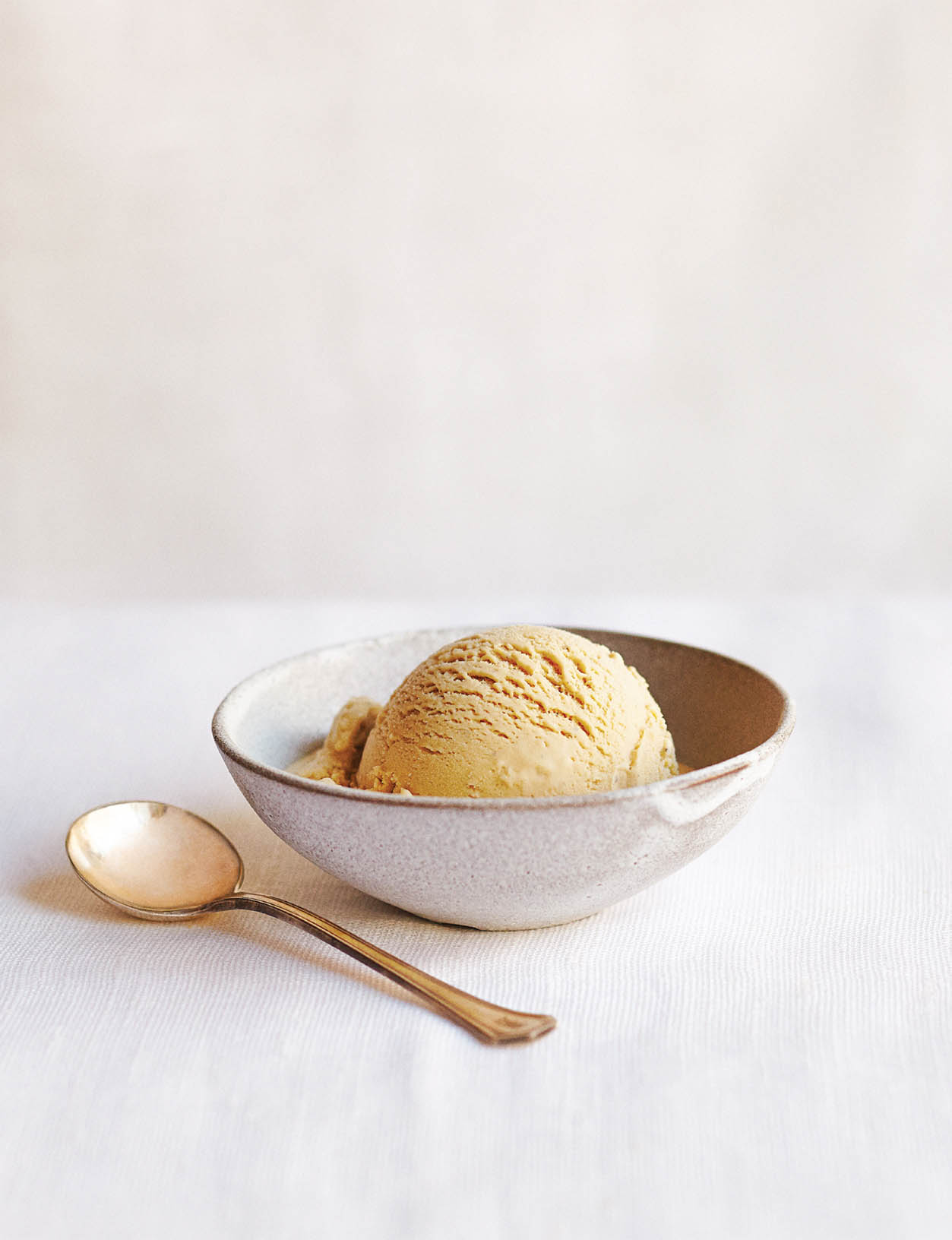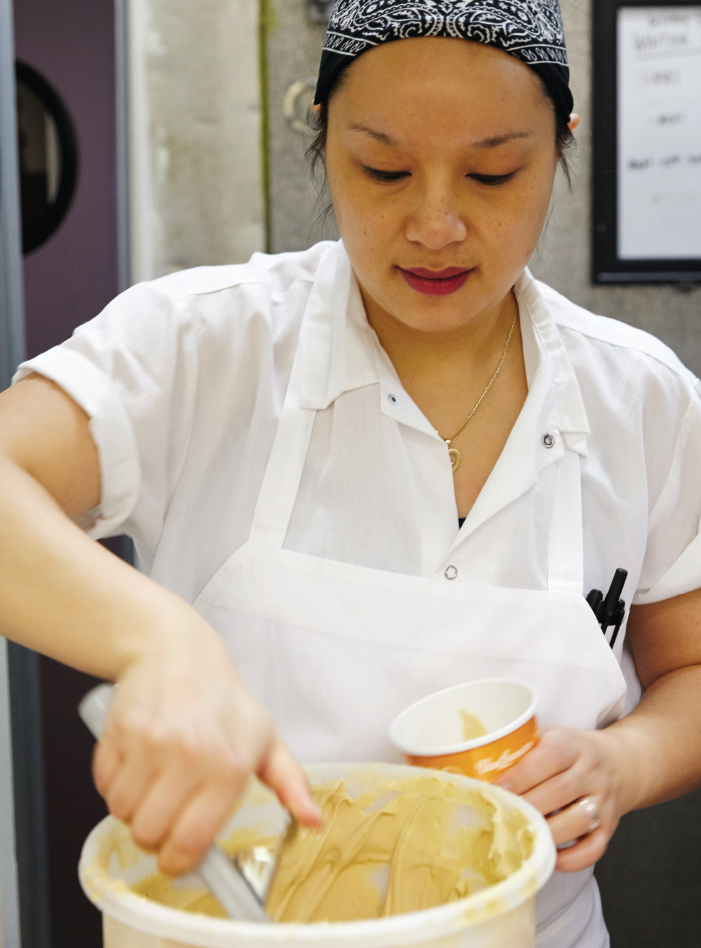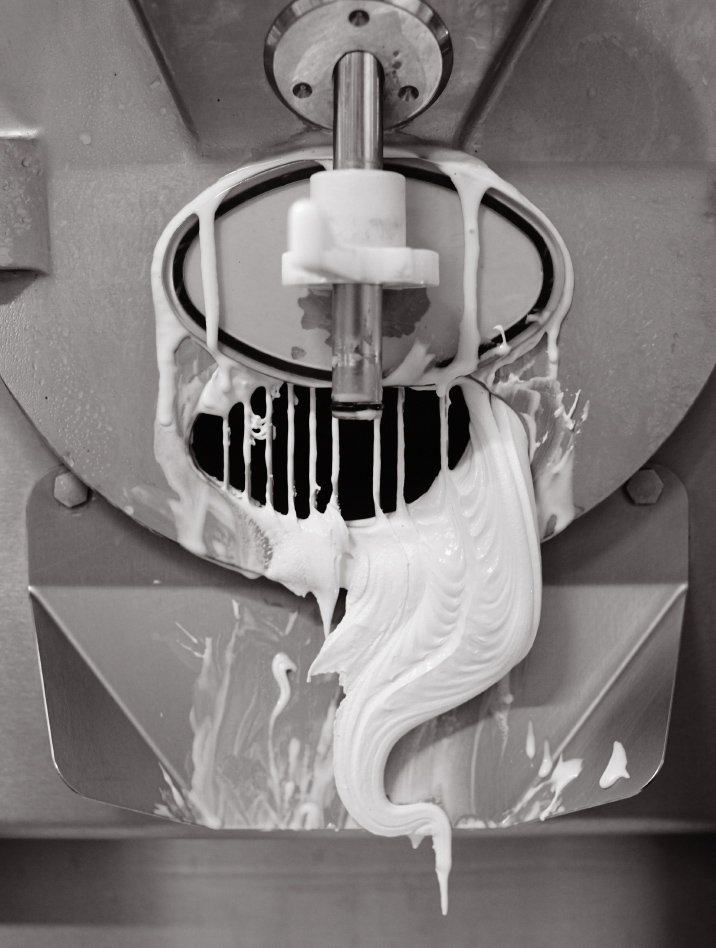EARL GREY TEA ICE CREAM

When we added Earl Grey ice cream to our trucks’ offerings in 2009, New Yorkers went mad for it. Not surprisingly—black tea, combined with bergamot oil, cuts through the summer heat about as well as anything. We use a high-quality loose tea from our favorite tea brand, Rishi, which uses pure Italian bergamot citrus oil (and not bergamot flavoring), to make the most intensely fragrant Earl Grey tea ice cream.
Making Earl Grey flavor in bulk proved to be quite a challenge. We needed to find bags large enough to steep such big quantities of tea, and durable enough so that the bags would keep together when we were done steeping. Tea absorbs a lot of liquid, and those bags grow heavy. A friend of Ben’s who was working at Brooklyn’s Sixpoint Brewery at the time gave us giant mesh steeping bags the brewery used for hops—and they made the whole large-batch operation a cinch. Of course, at home, things are much simpler; you can use good tea in tea bags or loose tea that you place in a separate tea bag, and you can even let the tea leaves float in the dairy mixture and strain them out later. The key is to find tea you love—it will make a real impact on the quality of your ice cream.
MAKES ABOUT 1 QUART
2 cups heavy cream
1 cup whole milk
¾ cup (150 grams) sugar
6 tablespoons (30 grams) loose Earl Grey tea
½ teaspoon (2 grams) kosher salt
6 large egg yolks
1. Pour the cream and milk into a double boiler or a heatproof bowl set over a saucepan of gently simmering water (the bottom of the bowl should not touch the water). Whisk in ½ cup (100 grams) of the sugar, the tea, and the salt and stir until the sugar and salt have dissolved. Warm the mixture until you see steam rising from the top. Remove from the heat and strain the mixture into a bowl, pressing on the tea leaves to extract as much infused liquid as possible. Discard the tea leaves and return the infused dairy mixture to the double boiler.
2. Meanwhile, prepare an ice bath in a large bowl and set another bowl over it. Set aside.
3. In a medium bowl, with a kitchen towel underneath it to prevent slipping, whisk together the egg yolks with the remaining ¼ cup (50 grams) sugar until uniform. While whisking, add a splash of the hot dairy mixture to the yolks. Continue to add the dairy mixture, whisking it in bit by bit, until you’ve added about half. Add the yolk mixture to the remaining dairy mixture in the double boiler. Set the heat under the double boiler to medium and cook the custard, stirring continuously with a wooden spoon and reducing the heat to medium-low as necessary, until steam begins to rise from the surface and the custard thickens enough to coat the back of the spoon. Hold the spoon horizontally and run your finger through the custard. If the trail left by your finger stays separated, the custard is ready to be cooled.
4. Strain the custard into the bowl sitting over the prepared ice bath and stir for 3 to 5 minutes, or until the custard has cooled. Transfer the custard to a quart-size container, cover, and refrigerate for at least 4 hours or, preferably, overnight.
5. Pour the chilled custard into an ice cream maker and freeze according to the manufacturer’s instructions. Place the container in which you refrigerated the custard in the freezer so you can use it to store the finished ice cream. Churn the ice cream until the texture resembles “soft serve.” Transfer the ice cream to the chilled storage container and freeze until hardened to your desired consistency. Alternatively, you can serve it immediately—it will be the consistency of gelato. The ice cream will keep, frozen, for up to 7 days.

